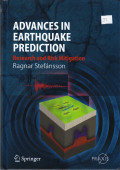
Advances in Earthquake Prediction: Research and Risk Mitigation
The special natural conditions in Iceland as well as high level technology, were the basis for multidisciplinary and multinational cooperation for studying crustal processes, especially processes a…
- Edisi
- Ed. 1, Cet. 1
- ISBN/ISSN
- 978-3-540-47569-9
- Deskripsi Fisik
- xxiv, 245 hal.; ilus.; 17 x 24,5 cm.; indeks.
- Judul Seri
- -
- No. Panggil
- 551.22 STE a

Seismic Design of Buildings To Eurocode 8
This book has a strong industrial emphasis, developed from practical short courses on seismic design run jointly by the Society for Earthquake and Civil Engineering Dynamics (SECED) and Imperial Co…
- Edisi
- Ed. 1, Cet. 1
- ISBN/ISSN
- 978-0-415-44762-1
- Deskripsi Fisik
- xvi, 318 hal.; ilus.; 16 x 24,1.; indeks.
- Judul Seri
- -
- No. Panggil
- 624.15914 ELG s
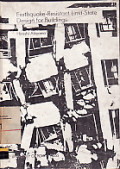
Earthquake-Resistant Limit-State Design for Buildings
This book aims to construct a logical framework for earthquake-resistant design applicable to all types of buildings by summarizing the results of individual numerical analyses and abstracting the …
- Edisi
- Ed. 1, Cet. 1
- ISBN/ISSN
- 0-86008-377-2
- Deskripsi Fisik
- ix, 372 hal.; ilus.; 19 x 26,5 cm.; indeks.
- Judul Seri
- -
- No. Panggil
- 693.8 AKI e
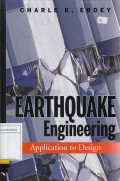
Earthquake Engineering: Application to Design
In view of the relatively large number of steel moment-resisting frames damaged during the Northridge earthquake, the book expands on the evaluation and performance of structures of this type. The …
- Edisi
- Ed. 1, Cet. 10
- ISBN/ISSN
- 978-9-470-04843-6
- Deskripsi Fisik
- xvii, 428 hal.; ilus.; 16 x 24,2 cm.; indeks.
- Judul Seri
- -
- No. Panggil
- 624.1762 ERD e

Earthquake Resistant Design: For Engineers and Architects
This book was written from the standpoint of a designer trying to keep a broad perspective on the total process, starting from the nature of the loading through to the details of construction. To t…
- Edisi
- Ed. 2, Cet. 2
- ISBN/ISSN
- -
- Deskripsi Fisik
- xix, 519 hal.; ilus.; 17,1 x 24,5 cm.; indeks.
- Judul Seri
- -
- No. Panggil
- 624.1 DOW e

Earthquake Protection of Essential Building Equipment: Design, Engineering, I…
This book addresses that perplexing problem: how to maintain operability of equipment after a major earthquake. The program is often more complicated than simple anchorage. Some critical types of e…
- Edisi
- Ed. 1, Cet. 1
- ISBN/ISSN
- 0-471-06270-7
- Deskripsi Fisik
- xiv, 464 hal.; ilus.; 16,5 x 24 cm.; indeks.
- Judul Seri
- -
- No. Panggil
- 693.8 MCG e
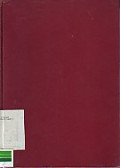
Earthquake Resistant Regulations of The World
On the occasion of holding the Second World Conference on Earthquake Engineering in Japan, the Organizing Committee planned to assemble and publish the various earthquake re sistant regulations in …
- Edisi
- Ed. 1, Cet. 1
- ISBN/ISSN
- -
- Deskripsi Fisik
- vi, 210 hal.; ilus.; 18,5 x 25,7 cm.
- Judul Seri
- -
- No. Panggil
- 624.17 WOR e
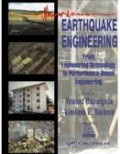
Earthquake Engineering from Engineering Seismology to Performance Based Engin…
This multi-contributor book provides comprehensive coverage of earthquake engineering problems, an overview of traditional methods, and the scientific background on recent developments. It discusse…
- Edisi
- Ed. 1, Cet. 1
- ISBN/ISSN
- 0-8493-1439-9
- Deskripsi Fisik
- 1152 hal.; ilus.; 18,1 x 26 cm.; indeks.
- Judul Seri
- -
- No. Panggil
- 624.17 BOZ e
Wind and Earthquake Resistant Buildings: Structural Analysis and Design
Following a brief overview of the battering forces of nature, Wind and Earthquake Resistant Buildings: Struc tural Anarysis and Design provides structural engineers with a uniquely practical perspe…
- Edisi
- Ed. 1, Cet. 1
- ISBN/ISSN
- 978-0-82475934-6
- Deskripsi Fisik
- xiv, 892 hal.: ilus; 18,2 x 26cm.; indeks.
- Judul Seri
- -
- No. Panggil
- 690 TAR w

Geotechnical Extreme Events Reconnaissance The 28 September 2018 M7.5 Palu-Do…
This book is a report from Geotechnical Extreme Events Reconnaissance. The GEER team in collaboration with the Ministry of Public Works and Public Housing, the National Earthquake Study Center and …
- Edisi
- Ed. 1, Cet. 1
- ISBN/ISSN
- -
- Deskripsi Fisik
- xvi, 74 hal.; ilus.; 18,5 x 26 cm.
- Judul Seri
- -
- No. Panggil
- PUPR 551.302 GEE g

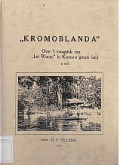
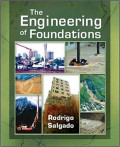

 Karya Umum
Karya Umum  Filsafat
Filsafat  Agama
Agama  Ilmu-ilmu Sosial
Ilmu-ilmu Sosial  Bahasa
Bahasa  Ilmu-ilmu Murni
Ilmu-ilmu Murni  Ilmu-ilmu Terapan
Ilmu-ilmu Terapan  Kesenian, Hiburan, dan Olahraga
Kesenian, Hiburan, dan Olahraga  Kesusastraan
Kesusastraan  Geografi dan Sejarah
Geografi dan Sejarah